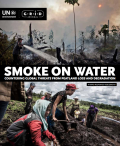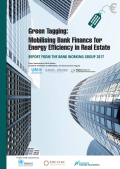
The Discussion Paper New Roles for South African Municipalities in Renewable Energy - A Review of business models reviews possible business models for South African municipalities to seize arising opportunities and minimise potential risks associated with the introduction of renewable energy technologies in the domestic electricity system. It proposes a typology of available business models for municipalities to seize emerging opportunities arising from renewable energy technologies. Three overarching roles, spilt into seven business models, are considered for municipalities: building electricity generation capacity; procuring electricity; and playing a facilitation function. Based on a three-pronged methodological framework taking into account the drivers of the business models; their techno-economic potential; and their ability to manage risks (regulatory, financial and socio-political); this report reviews each business model, highlighting their strengths and weaknesses.

Smoke on Water – Countering Global Threats From Peatland Loss and Degradation is a Rapid Response Assessment that looks at peatland location, extent, threats and the policies to manage and protect them. The goal of this rapid response assessment, carried out on behalf of UN Environment and based on the efforts of more than 30 contributors, is to raise awareness about the importance of the world's peatlands and to encourage immediate action to preserve them.
The assessment supports the Global Peatlands Initiative and is based on existing data and information. Its main messages are:
1. Peatlands are important to human societies around the world. They contribute signicantly to climate change mitigation and adaptation through carbon sequestration and storage, biodiversity conservation, water regime and quality regulation, and the provision of other ecosystem services that support livelihoods.
2. Immediate action is required to prevent further peatland degradation and the serious environmental, economic and social repercussions it entails.



Severe pollution incidents have provided some of the most visually arresting images of recent armed conflicts. Oil fires and spills, bomb-damaged and looted industrial facilities, abandoned military material and munitions, rubble and demolition waste – all are associated with contemporary conflicts, and all can threaten ecosystems and human health. But these obvious, and often serious, sources of pollution rarely tell the whole story. The relationship between armed conflict and pollution – or what we view as the toxic remnants of war – can be complex, and its legacy can last for decades after conflicts end. While it is a problem that has received increasing attention in recent years, too little is currently done to minimize the generation of pollutants in conflict and military activities, and to examine and address their impact on human health and the environment.
